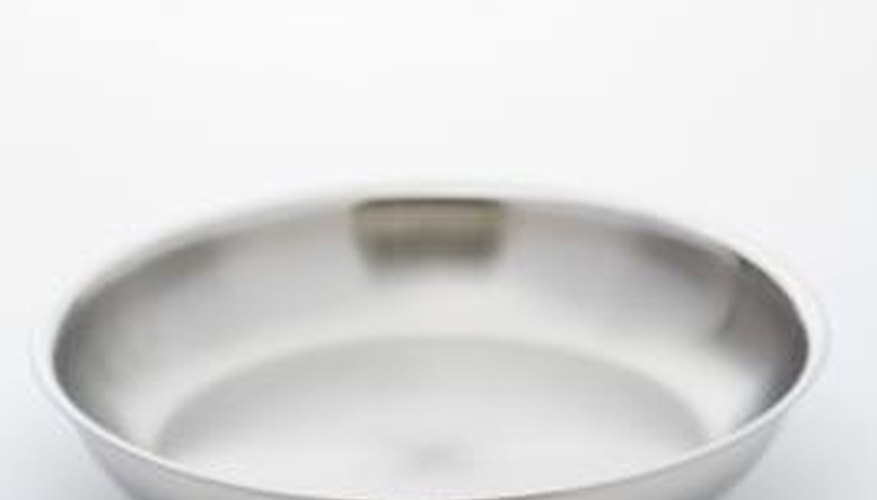When you decicde what you are going to cook, one of the first things you must do is decide what you will use to cook the food. A frying pan is a shallow pan for use on a hob. This type of pan offers advantages and disadvantages, depending on what you are cooking.
Cooking Speed
Food cooked in a frying pan typically cooks more quickly than in other types of pots and pans. A frying pan is shallow and wide, which allows the food to be spread thinly and evenly over the bottom of the pan. The heat is also spread evenly across the bottom of the pan, cooking the food more quickly. Food cooked in a frying pan can easily be cooked over a lower flame, which can help reduce the risks of burning.
- Food cooked in a frying pan typically cooks more quickly than in other types of pots and pans.
- A frying pan is shallow and wide, which allows the food to be spread thinly and evenly over the bottom of the pan.
Size
While a frying pan may seem small, it can actually accommodate the necessary amount of food for most recipes. The pan itself is fairly shallow, but it is typically wider than other pans. This means it can hold more food than it appears. The sides are also often sloped, which can assist you in mixing the ingredients together, as well as offer additional space for your ingredients. In many cases, the food cooked in a frying pan does not require a lot of space.
- While a frying pan may seem small, it can actually accommodate the necessary amount of food for most recipes.
Flavour
According to Cookery Online, the flavour of your food can be complemented by cooking the food in a frying pan. Because the food cooks quickly, much of the original flavour of the ingredients is maintained. The longer an item is cooked, the less flavour and nutrients it keeps, according to "Self" magazine. When you cook your food in a frying pan, the main objective is to brown the outsides of the food. The food becomes crispy and tastes fresher than food that is cooked for longer periods of time.
- According to Cookery Online, the flavour of your food can be complemented by cooking the food in a frying pan.
- When you cook your food in a frying pan, the main objective is to brown the outsides of the food.
Attention
Cooking in a frying pan requires you to pay close attention to your food. With some other types of pans, such as skillets and deeper pots, you can walk away from the stove and work on other aspects of your meal while the food cooks. These types of pans do often require some attention, but not as much. A shallow frying pan puts your food at an increased risk for burning. It is advantageous that your food cooks more quickly, but it can also be a disadvantage. While using the frying pan, you must stir your food frequently to ensure it cooks evenly and does not burn.
- Cooking in a frying pan requires you to pay close attention to your food.
- A shallow frying pan puts your food at an increased risk for burning.
Oil
Unless you are using a non-stick frying pan, you need to use oil to prevent your food from sticking to the pan. The oil can add to the cholesterol in your food, especially if you choose oil that is not as healthy, such as regular vegetable oil instead of canola or peanut oil. Cleaning up your frying pan after you have used oil is also more difficult. To avoid these disadvantages, choose a frying pan that has a non-stick coating.
- Unless you are using a non-stick frying pan, you need to use oil to prevent your food from sticking to the pan.
- The oil can add to the cholesterol in your food, especially if you choose oil that is not as healthy, such as regular vegetable oil instead of canola or peanut oil.
High Temperatures
Cooking with a frying pan is not recommended at higher temperatures. The food is already spread more thinly in a frying pan and is at an increased risk of burning, even at lower temperatures. However, if you turn the heat up too high, the handle of the frying pan can become too hot to touch and your food is most likely going to burn regardless of how much attention you give it. Some people turn up the heat thinking they can finish cooking faster. But this typically results in food that is burnt on the inside and uncooked at the centre.
- Cooking with a frying pan is not recommended at higher temperatures.
- The food is already spread more thinly in a frying pan and is at an increased risk of burning, even at lower temperatures.
